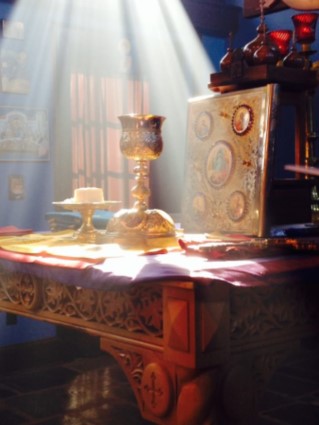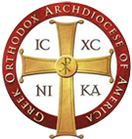The Eucharistic Bread and Artoklasia
The loaf of bread which is used in church for the Divine Liturgy is called the “Eucharistic Bread”, or “Prosforon” in Greek. It is made of pure flour and yeast, and is imprinted with the seal bearing the inscription “Jesus Christ Conquers”, IC XC NI KA. The prosforon is brought to church together with wine and the family Diptych which contains the names of the living and deceased members of the family which the priest commemorates during the Office of Preparation or “Proskomide”, when he prepares the Eucharistic Bread for the Divine Liturgy.
The Orthodox Christian family also prepares the Five Loaves of special bread for the Artoklasia Service, usually offered at the conclusion of Great Vespers or the Divine Liturgy. This service, a remnant of the Supper of Love in the Ancient Church, is a reminder of the miracle of the feeding of the Five Thousand with five loaves of bread (Mark 6:38-44), and a thanksgiving for the virtuous lives of the Saints, their martyrdom, zeal, and love for Christ. During the service, the priest offers prayers for the enlightenment and salvation of those who prepared and offered the loaves, and of all the faithful present. This service is usually performed on the Name Day of a church or for a special feastday or occasion.



